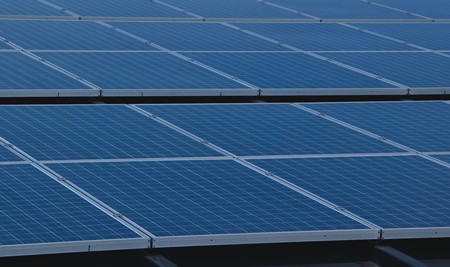Solar on the Horizon for REITs
Post on: 21 Август, 2015 No Comment

Rooftops covering roughly 2 billion sq. ft. of major U.S. commercial real estate controlled by institutional investors could accommodate solar power equipment. But as that figure suggests, few REITs and pension funds are loading up their rooftops with solar panels.
The problem: Triple net leases, which discourage building owners and tenants from undertaking multimillion-dollar solar installations. Even so, a major change in the solar landscape for REITs and pension funds may be on the horizon.
A California startup is signing up its first customers for a new service that it claims will make solar more attractive to owners of big property portfolios by counteracting certain elements of triple net leases. Recurrent Energy Inc. will build, own and operate solar power systems for institutional investors.
The company will rent rooftop space from building owners (generally at 20 to 40 cents per sq. ft. of roof used), creating a revenue stream for the investors. Meanwhile, Recurrent will sell what it says is market-competitive power for those buildings, generating cost savings for tenants’ electric bills.
As it stands now, Recurrent CEO Arno Harris says, the structure of triple net leases hinders investments in solar technology. Building owners are reluctant to buy equipment that ultimately benefits tenants through lower utility bills, he says, while tenants are unwilling to pay for equipment on rooftops that they don’t own.
According to this month’s Solar Electricity Industrial Price Index from solar information provider Solarbuzz LLC, a 500-megawatt, roof-mounted solar installation for a large industrial building costs about $2.5 million. That price tag excludes any government incentives or utility rebates.
So far, much of the focus in green building has been on new construction. Harris says his company’s service allows portfolio owners to green existing buildings without having to re-engineer structures or equipment.
“We like to say that a solar array on a building is like a big green billboard,” Harris says. “It advertises the greenness of the building.”
Few of these “billboards” have been posted yet. But Recurrent Energy calculates that there’s plenty of space available for them.
Now, about 8.5 billion sq. ft. of investor-owned commercial rooftops are on buildings measuring at least 35,000 sq. ft. according to data analyzed by Recurrent Energy. About 5.5 billion sq. ft. of that total is considered suitable for solar equipment because the roofs are flat and free of shading.
Roughly 2 billion sq. ft. of that space is in states like California and New Jersey that have enacted or are adopting “favorable” incentives for solar power generation. These rooftops could lead to as much as 15,000 megawatts of solar power generation, compared with less than 750 megawatts currently available from commercial rooftops throughout the U.S. By comparison, a typical nuclear power plant can crank out as much as 500 to 2,000 megawatts of power.
Recurrent says the 15,000 megawatts of new solar power generation would result in reduction of carbon emissions of about 30 billion pounds a year.
Once barriers such as those tied to triple net leases are removed, forward-thinking REITs and institutional investors will pursue solar installations quite aggressively, Harris predicts. “We think you’ll see a sizeable percentage of those rooftops that are empty now covered with solar power.”
At the moment, REITs such as Thomas Properties Group Inc. and ProLogis are leading the solar way. Thomas, for instance, has installed solar panels on the roof of the headquarters for the California Environmental Protection Agency. ProLogis, an industrial REIT, has one solar installation at a distribution center in France and another at a distribution center in Spain. Several other REITs are looking at solar installations, including Taubman Centers Inc. and Developers Diversified Realty Corp. according to analysts at UBS Securities LLC.
“Solar power is one of the more expensive methods of incorporating green into a building, so we think many companies are choosing to employ some of the lower-cost and better-known methods first,” says Lindsay Schroll, a REIT analyst at UBS. “We think that as more REITs test out solar power and it becomes more mainstream, costs will come down, which in turn will create more widespread use.”
At ProLogis, solar installations are not widespread just yet. In the U.S. market, ProLogis says its solar timetable depends largely on the cost and availability of solar modules, which represent at least half of the total installed cost for a solar energy system. During 2007, the per-watt price of modules fell 5 cents to $4.83, according to Solarbuzz.
Drew Torbin, sustainability analyst at ProLogis, says: “Fortunately, the renewable energy industry is making progress in this direction, and ProLogis is well-positioned to capitalize on this trend. The company has ample roof space, a captive customer audience and a growing number of utilities interested in partnering with us.”














